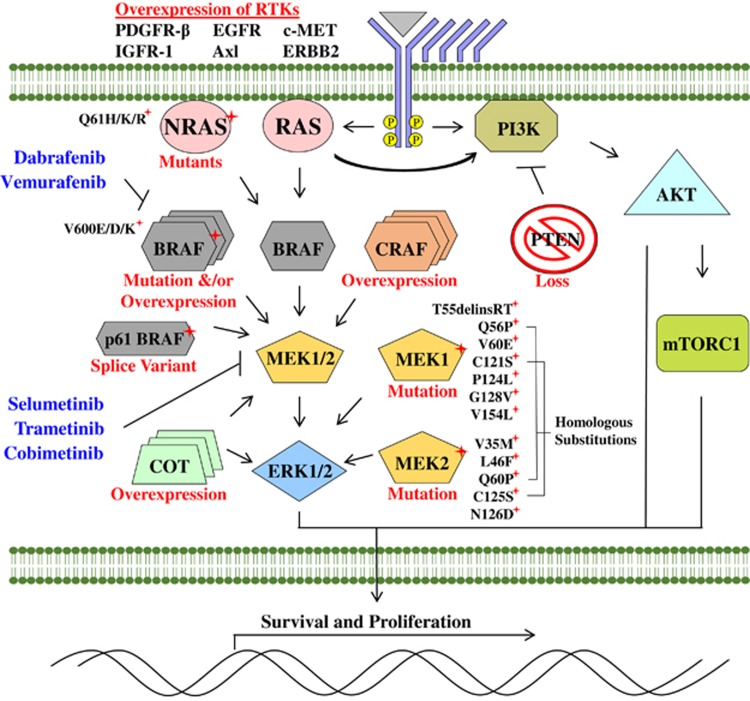Figure 1.
Scheme depicting mechanisms of resistance observed to BRAF and MEK1/2 inhibitors in vitro and in vivo. Resistance is largely mediated by alternative means of MAPK pathway activation. Mutations in MEK1 and MEK2 that interfere with drug binding-pockets or that upregulate inherent kinase activity mediate resistance to both BRAF and MEK inhibitors. The pathway can also be reactivated through gain-of-function NRASQ61H/K/R mutations, alternative splice variants of BRAFV600E, overexpression of BRAFV600E, CRAF or Cancer Osaka thyroid oncogene (COT1) or phosphatase and tensin homolog (PTEN) mutations. Overexpression of RTKs including platelet-derived growth factor receptor β (PDGFRβ), epidermal growth factor receptor (ERBB2), insulin-like growth factor 1 receptor (IGFR1), hepatocyte growth factor receptor (MET) and AXL RTK have also been proposed to drive resistance.

